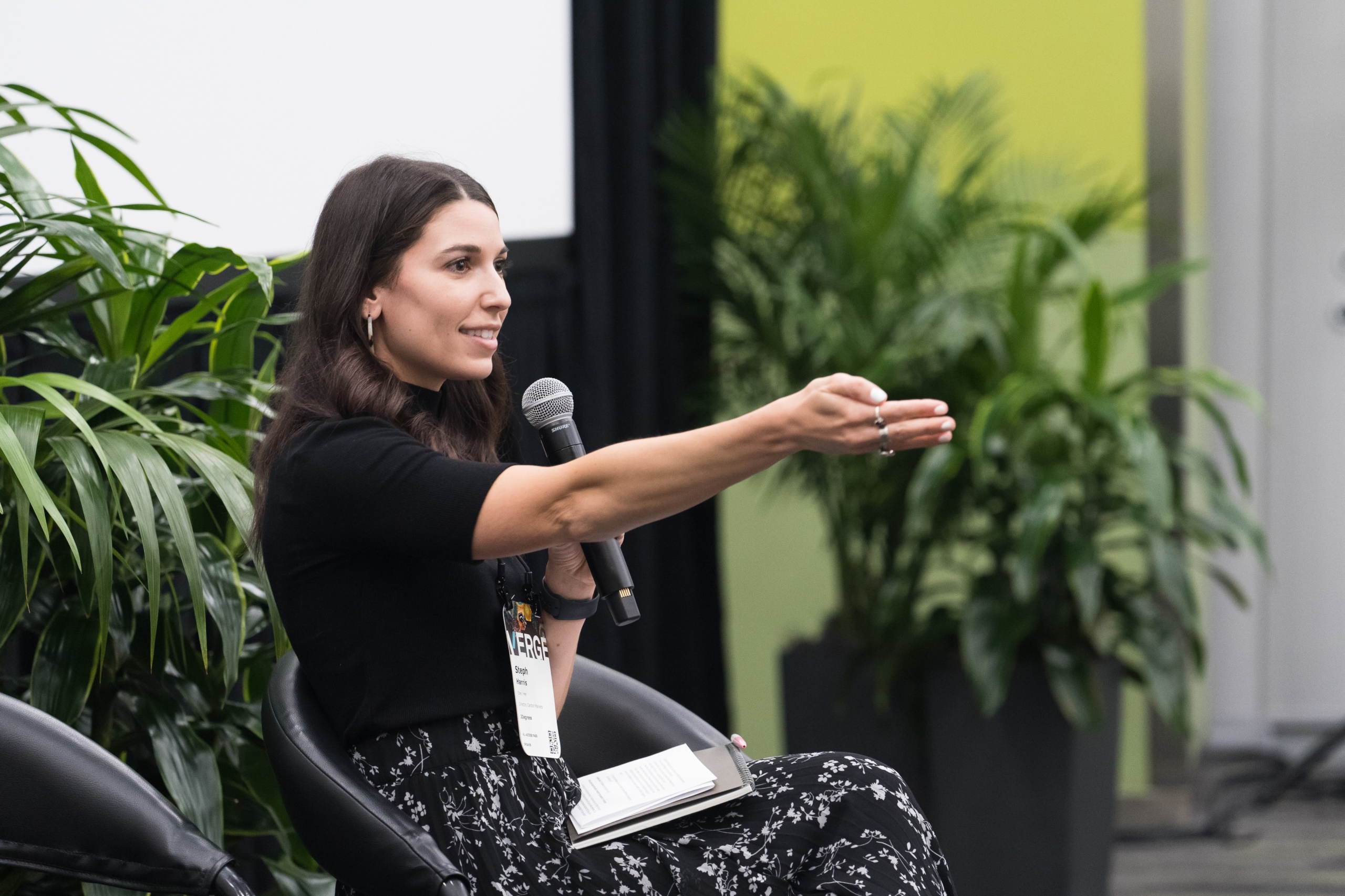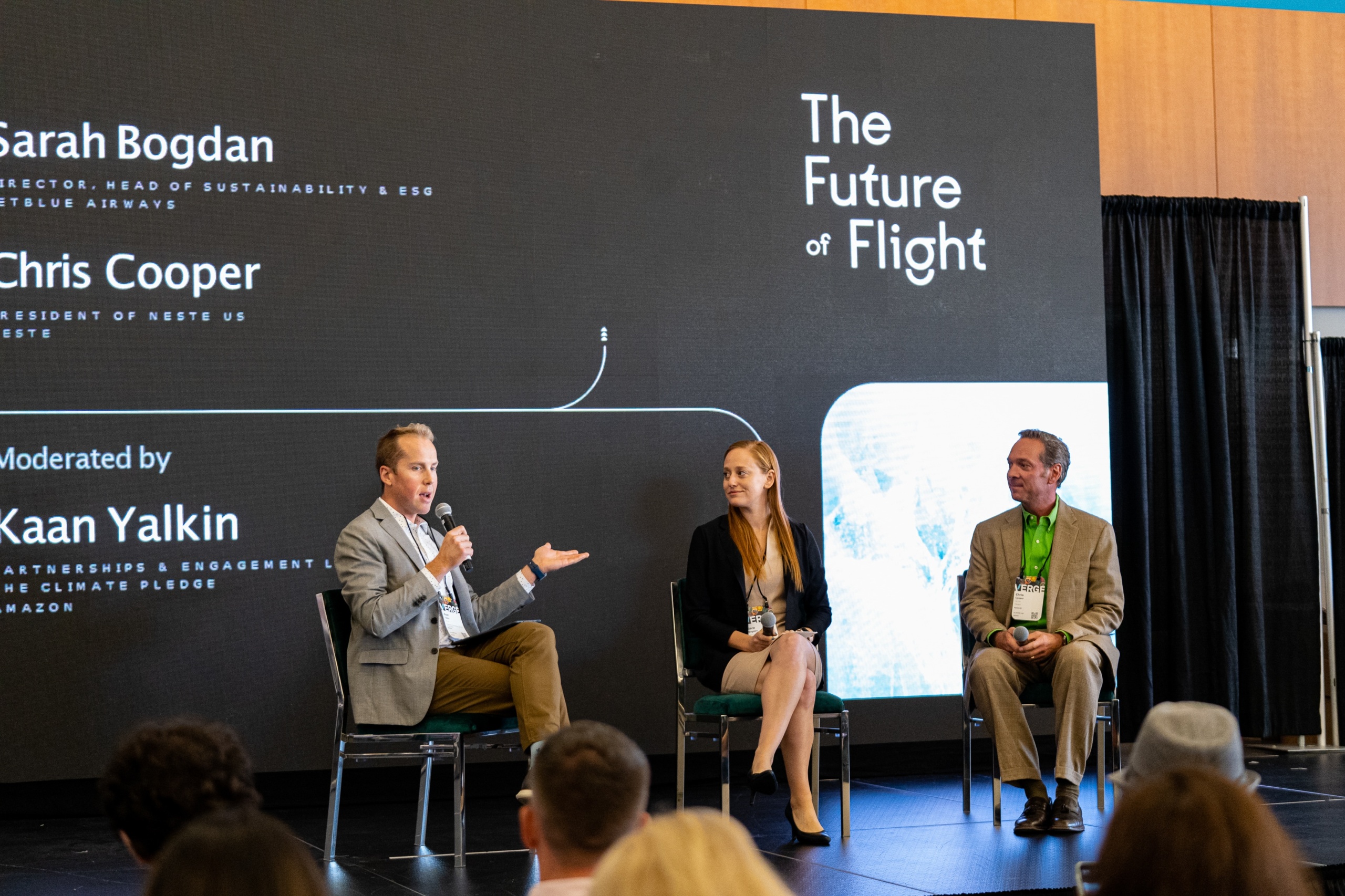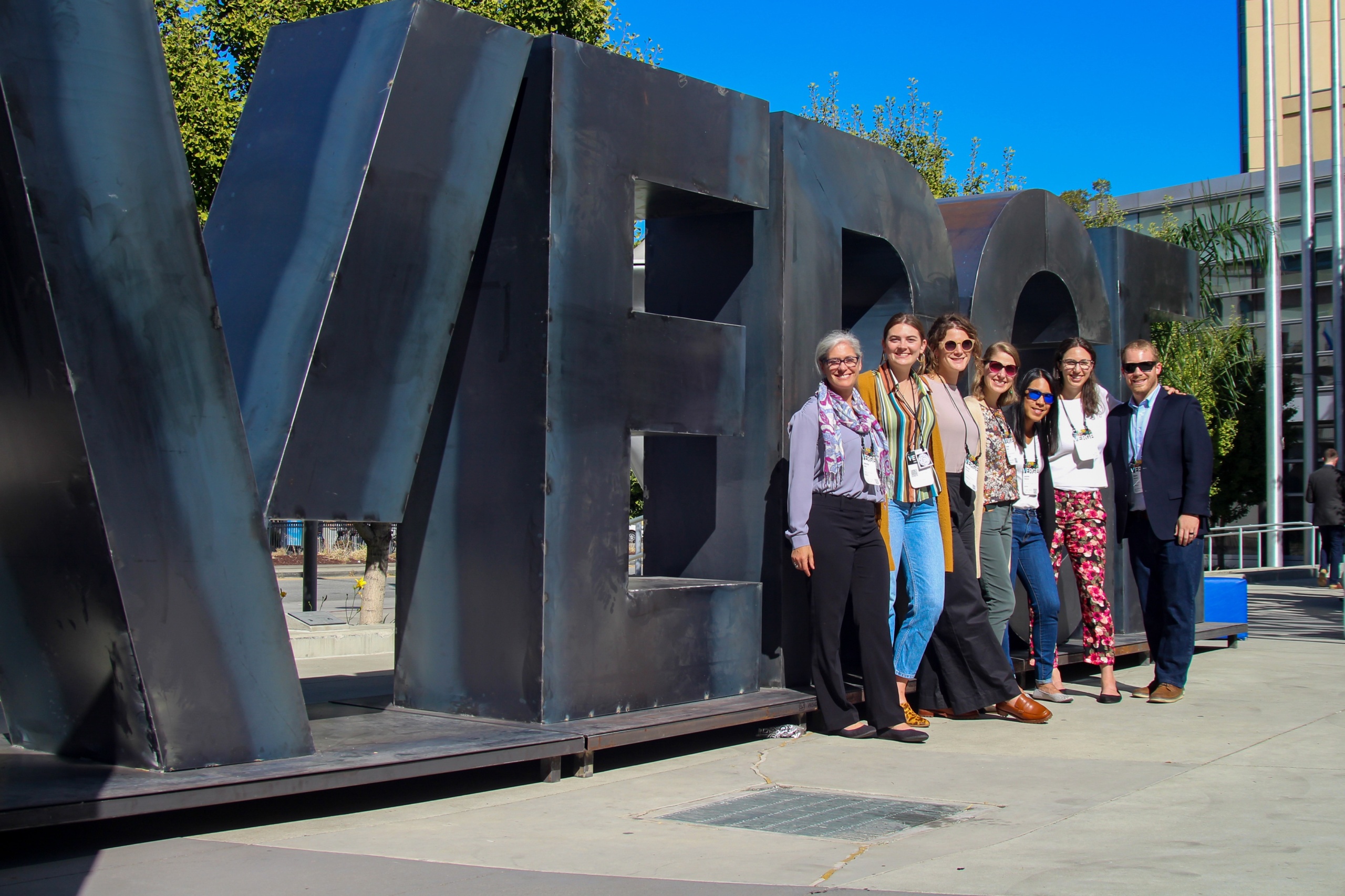Staying vigilant in the fight against climate change can be a challenge, especially during a global pandemic that often makes efforts feel siloed. Returning in-person to GreenBiz’s annual VERGE Conference for the first time in three years offered an opportunity to share climate breakthroughs and accelerate climate solutions in real-time. This year, we sent 19 members of the 3Degrees team to join over 4,000 other industry leaders for three days of ideation and collaboration. The team emerged from VERGE week with the glow of intellectual nourishment and many takeaways to share.
ALL ABOUT CARBON
Carbon was definitely a hot topic at VERGE this year. Amongst the wide cross section of project types in the voluntary carbon market (VCM), nature-based solutions is one that came up in many discussions. Nature-based solutions were analyzed from all angles— from concerns of leakage and lack of additionality to the significant role they play when paired with engineered climate solutions.
At the center of the carbon discussion was 3Degrees’ Director of Carbon Markets, Steph Harris, who moderated a discussion with sustainability leaders from Microsoft and Salesforce as they detailed case studies of long-term carbon procurement, covering topics like on-going efforts to scale carbon removal technology. “The carbon removal market needs to replicate the way the renewable power market scaled in the past decade,” said Rafael Broze, Microsoft’s Carbon Removal Program Manager. Currently, 99% of its carbon credit market purchases are nature-based removals and 1% are engineered solutions. The group hypothesized that by 2040 they expect this ratio to shift considerably, and that supporting both removal and avoided emissions projects on the path to net zero is worth consideration.

3Degrees’ Director of Carbon Markets, Steph Harris, moderated a discussion with Rafael Broze, Microsoft’s Carbon Removal Program Manager and Patrick Flynn, Salesforce’s Senior Vice President of Sustainability, examining case studies of long-term carbon procurement.
Coinciding with VERGE was Verra’s announcement of a newly-approved methodology for improved forest management. The methodology uses dynamic baselines, which involves using available data to repeatedly and continuously determine the difference in carbon benefit. Although it increases integrity, the new methodology makes it difficult to accurately project volume, so long-term agreements from buyers, volumetric safe guards, and further reliance on a diverse portfolio of carbon avoidance and removal projects may be needed.
Also examined in the “Solving the Carbon Market’s Integrity Problem” breakout session, was REI’s desire to catalyze new solutions. REI signed on as a buyer of The Family Forest Carbon Program, a project that’s putting the dynamic baseline in action to increase confidence and reliability in the value of carbon credits. The dynamic baselines are updated every verification cycle and provide a much more refined approach to matching control sites with project sites. The new approach to project baselines and its dynamic quality of consistently monitoring project site activity, actually de-risks forestry offsets and as a result, may bring in additional demand from corporate buyers that are hesitant to enter the VCM.
There has been heightened scrutiny and a surge of mainstream media coverage on the lack of standards and varying degrees of carbon project quality. The importance of analyzing every piece of criteria that makes a quality credit was reiterated— factors like additionality, durability and GHG accounting should be closely examined by buyers. We also heard that recent market trends are showing an increased focus on quantifying impact, especially from new carbon credit buyers entering the space.
Our team digested a considerable amount of carbon content over the course of the three days and came away with the sense that there is a continued need for standardization and a neutral voice within the VCM. This player could offer impartial information about carbon options, best practices for connecting carbon with strategic goals, what pricing trends exist, how to find a carbon advisor, and how to weigh the risks of various strategies. We’ll be looking to forth-coming guidance from SBTi’s beyond value chain mitigation, as well as frameworks developed by the Integrity Council for the Voluntary Carbon Market to build a common approach to determining carbon project quality.
SCOPE 3 AND RECENT CLIMATE POLICY

Panelists from JetBlue Airways, Deloitte, Salesforce and Rocky Mountain Institute shared insights on how collaborating on Scope 3 emissions can drive the aviation industry forward. (Photos courtesy of GreenBiz)
Tackling scope 3 emissions continues to be one of the top challenges for organizations pursuing SBTi and net zero targets and was on the minds of presenters and attendees at VERGE this year. One session on sustainable aviation fuel (SAF) explained how SAF certificates are being used to reduce scope 3 emissions. Leaders from World Energy, the Environmental Defense Fund, United Airlines, the Boeing Company, and JetBlue Airways discussed decarbonizing the future of flight in the “Sustainable Aviation Fuel and Net Zero by 2050: Can the Airline Industry Move Faster?” panel.
As pressure mounts on airlines to cut the roughly billion tons of carbon dioxide this fuel emitted when burned, the industry is developing electric aircrafts and investing in sustainable aviation fuel. We heard that about 1,000 times more SAF than is currently being produced today is needed. Airline executives are aware of this opportunity and are eager to decarbonize fuels, which make up about 95% of total aviation industry emissions. Policies like the IRA and LCFS are helping boost sustainable fuel production, but more hydrogen, power-to-liquid technologies and green feedstock are needed for SAF to really take off, and there is still need for a book and claim system. Infrastructure and feedstock barriers exist and vary by location.
Other considerations we felt were noteworthy were around the SEC Climate Risk Disclosure Rule, the Inflation Reduction Act, 24/7 carbon free energy (CFE), and green tariffs. Speakers on the “Next Generation Carbon Free Energy Procurement” panel emphasized that without 24/7 CFE implementation, the industry will continue to lock in fossil fuel infrastructure to the detriment of communities. Speakers in the session “Green Tariffs: Benefits and Opportunities for Energy Customers and Utilities” made recommendations for those considering green tariffs. They urged early and frequent engagement with the regulator, breaking the green tariff engagement process into two segments–negotiations and procurement–as a best practice, and having specific goals and timelines to make the process smoother.
CONTINUING THE CONVERSATION
Our team’s time at VERGE 22 was extremely valuable and inspiring. We intend to further explore these complex, developing concepts amongst our teams, and use the insight we gleaned to better support our customers on their decarbonization journeys. Across the dozens of sessions within VERGE’s six program tracks, it was extremely difficult to narrow down our list of key topics to share. That being said, many of our focus areas were covered at the event, so the 3Degrees team would love to continue the conversation. Please connect with us to learn about our work on these topics.


